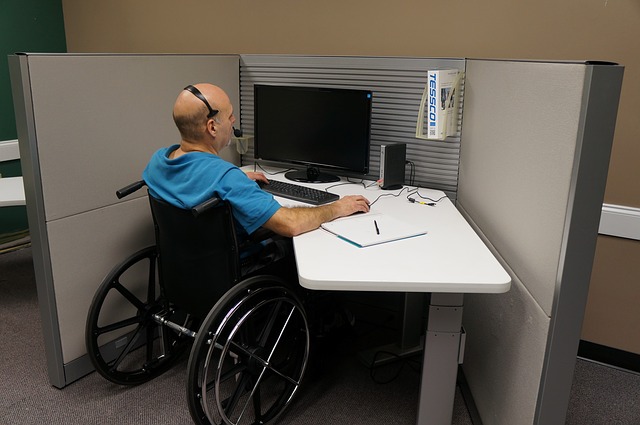Disability Inclusivity: It IS Your Business
Image by Richard (Dick) Kaufman from Pixabay
Creating an inclusive workplace benefits employers, as well as their workers. Some businesses may hold back from hiring disabled employees, failing to see past personal biases and view the candidate for his or her qualifications. In doing so, business owners deny themselves the opportunity to become a part of the solution, rather than the problem, when it comes to workplace inclusivity.
Why is Disability Inclusion Important?
Disability Inclusion in the workplace provides advantages for workers and employers alike. Creating an inclusive workplace allows employers to fully support their workers. According to the Centers for Disease Control and Prevention, 61 million adults across the U.S. live with a disability, such as legal blindness. As such, businesses may already have disabled employees in their workforce. Through inclusive practices, employers may give their workers the tools and support they need to be most productive. Inclusivity practices also give employers access to a qualified pool of talent they may otherwise have overlooked.
For disabled workers, workplace inclusivity gives them equal opportunity to earn for themselves and their families, advance in their careers, and succeed in the workforce. Without such practices, some persons with disabilities may not have even considered the possibility of living the independent life that having a job may offer them.
How Can Businesses Improve Disability-Inclusion Practices?
Businesses can take steps, including getting rid of unconscious biases, creating communities of understanding and support, and engaging with community groups, to help improve their disability-inclusion practices. Expanding their talent pool to include people with disabilities may help employers strengthen their workforces.
Getting Rid of Unconscious Biases
Employers should think about their recruiting, hiring, development, and training processes to identify and eliminate possible sources of unconscious biases. Without realizing it, some employers may use processes that limit disabled applicants’ ability to show off their strengths or discourage them from applying at all. For example, an autistic applicant may have all the necessary skills for a position and work well in a team setting. However, due to struggles with the traditional interview process, an employer may overlook the applicant and the talent he or she might bring to the company.
Creating a Community of Understanding and Support
Creating an understanding and supportive workplace for disabled workers may help build an environment in which all workers thrive. To this end, employers may provide training to help workers understand the challenges that people with disabilities, whether from an injury accident, or medical condition, face in the workplace. Additionally, businesses may create programs and opportunities for disabled workers to connect with other employees with disabilities. Employers may also consider setting up coaching and mentoring initiatives to help new workers learn from seasoned employees and foster further inclusion from the beginning of employment.
Engaging With Community Groups
Engaging with groups within the disability community may help businesses identify potential job candidates and establish recruitment pipelines. In addition, those living with disabilities may be able to more easily identify areas of opportunity for businesses seeking to become more inclusive. Taking part in community events may help give businesses a presence and encourage those with disabilities to consider applying for jobs they may otherwise have not voiced interest in pursuing.

